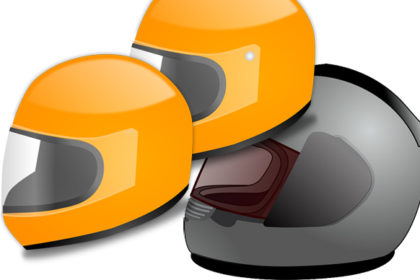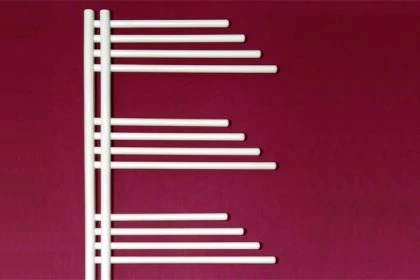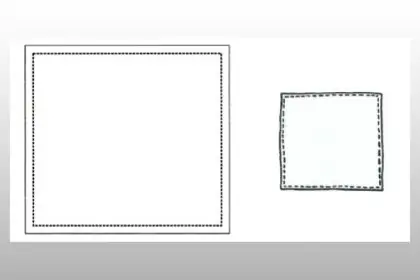With its judgement on the design of a sports helmet, the Federal Supreme Court has referred the settled case law in design law on intersection of the identical features within narrow limits. The BGH ruled that the representation of a design must be clear and unambiguous. This is in line with EU case law.
Representation of the design in variations

At the centre of the proceedings was a registered design – today known as a registered design – showing a sports helmet. To represent the design, the applicant had submitted seven black-and-white photographs of the sports helmet, each showing the helmet with different features, including different colour gradations and designs and different straps.
In 2014, an application for invalidity was filed against the sports helmet design on the grounds that the design lacked protectability because it did not identify a uniform object of protection. An application for invalidity of a design can be filed by anyone at the German Patent and Trade Mark Office according to § 34a para. 1 sentence 1 DesignG.
Federal Patent Court claimed overlap
This request was rejected by the DPMA and also by the Federal Patent Court (BPatG). The BPatG justified this with the view that the illustrations and representation of the registered design did not represent different views of a helmet but showed seven different helmets. The subject matter of protection could be determined by forming an intersection of the identical features of the different illustrations. All the deviations shown were the same in so far as they each had an identically shaped helmet shell.
BGH: Appearance of only one product required in individual registration
However, the Federal Supreme Court of Justice (BGH) contradicted the ruling of the BPatG and thus also abandoned the jurisprudence previously known as Schnittmengentheorie (in engl: intersection theory) of recognising different forms of design of a product as one design. In its judgment, the BGH stated that a design must be declared invalid if the appearance of only one product is not reproduced in the single application for a design because the object of design protection cannot then be determined. In such a case – as in the present case – the object of protection has to be determined by interpretation.
Requirements for the representation of the design
The provisions of the German Design Act generally provide for photographic or other graphic representations as a requirement for a design application (§ 7.1 of the DesignG). Up to ten representations per design are permissible. A representation of a design may only show one view of the design pursuant to § 7.3 of the DesignG. In its judgment, however, the Federal Court of Justice emphasised that this possibility of presenting up to ten representations with different views per design does not serve the purpose of presenting different embodiments of a product in one
single registration. For such a combination of different embodiments of a product, a multiple application of several designs would be suitable (§ 12.1, DesignG ).
Intersection does not apply to individual applications with different features
The BGH acknowledges that the BPatG referred to the previous case law of the intersection theory by adopting a basic form applicable to all representations by forming an intersection of the corresponding features of the appearance of the helmet. However, this case law could not be upheld in the event that several representations of a design applied for by way of an individual application were submitted which show different embodiments of a product with different features of the appearance of this product, the Federal Court of Justice clarified. This had happened in the present case.
The BGH recalled that according to § 37 (1) DesignG only the features of the appearance of a product visibly reproduced in the application can be the subject of design protection. The BGH ruled that the representations of the design must clearly and unambiguously identify the object for which protection is sought.
BGH judgement adapts to European jurisprudence
This design and design requirement was already formulated last summer by a leading ruling of the European Court of Justice (ECJ) for Community Designs at European level, in the Mast-Jägermeister ruling. The ruling of the BGH on sports helmets is in line with this view.
If the design owner claims design protection for the deviating features, it is not permissible to determine a uniform object of protection on the basis of the intersection of the features common to all representations, the BGH ruled. The object of protection had been filed as an individual application for the design, but nevertheless with different designs of the product; this did not visibly reflect the appearance of “a” product.
In such a case – as in the present sports helmet case – the design does not reveal a uniform object of protection within the meaning of § 1 No. 1 DesignG and is therefore invalid according to § 33. 1 DesignG. With this ruling, the BGH referred the case back to the Federal Patent Court.
Would you also like to secure your design or trademark rights?
Our attorneys have many years of expertise in design law and trademark law and are authorized to represent you before any court in Germany as well as internationally.
If you are interested, please contact us.
Sources:
Judgement of BGH I ZB 25/18 (in German)
Images:
OpenClipart-Vectors /pixabay.com / CCO License (yellow helmet) | OpenClipart-Vectors /pixabay.com / CCO License (grey helmet)








Leave a Reply